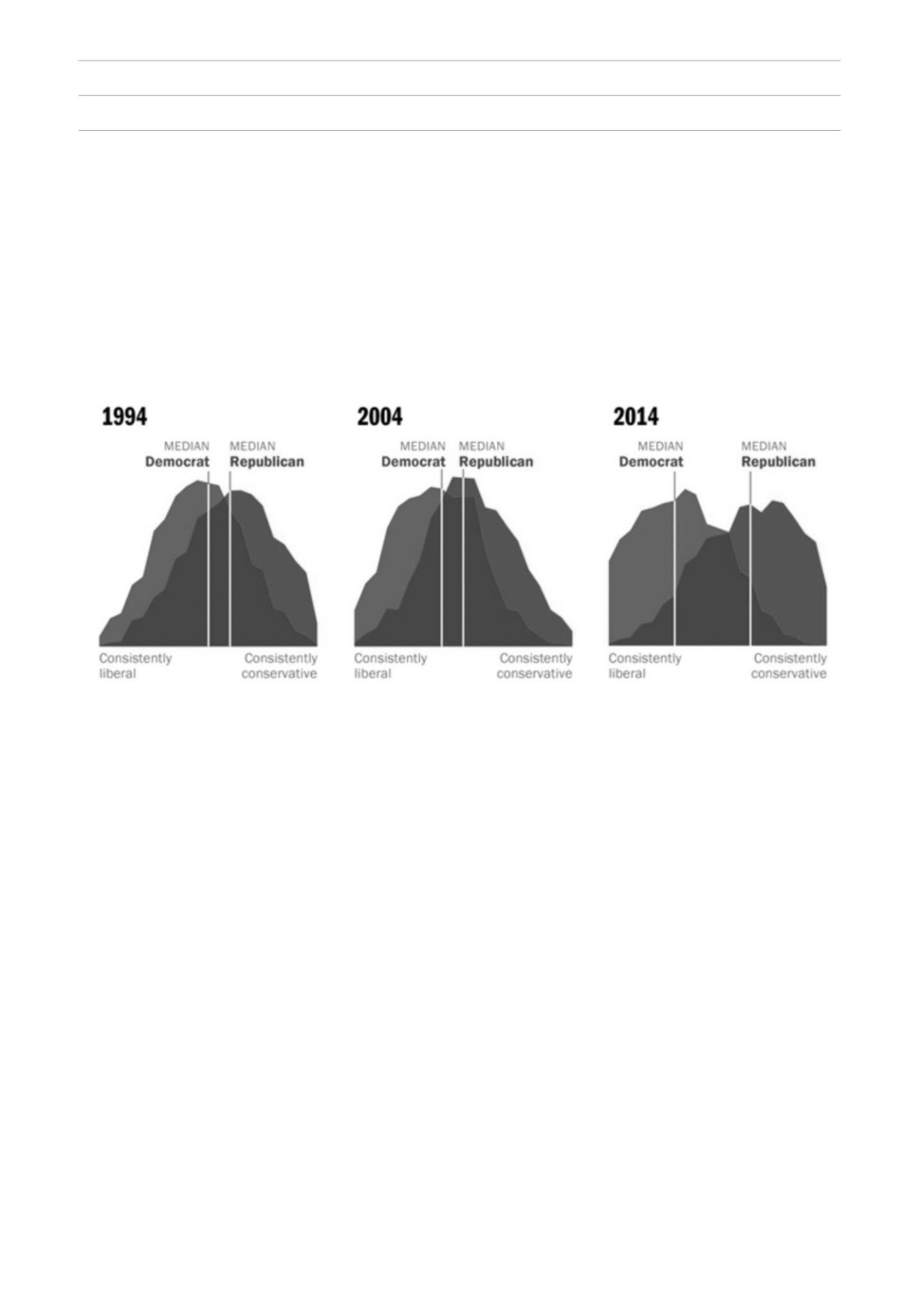Китай и США: границы соперничества и сотрудничества / China and the US: Limits of Competition and Cooperation
2023; 7: 68-84
США & Канада: экономика, политика, культура / USA & Canada: economics, politics, culture
УДК 327
DOI: 10.31857/S2686673023070064
EDN: GKRKCN
Sino-Russian Cooperation in the Context of Sino-US
Strategic Rivalry
Xu Bo
Jilin University
2699 Qianjin Street, Changchun, 130012 People’s Republic of China
ORCID:\0000-0002-0461-4611
e-mail: bxu2@jlu.edu.cn
Ding Huiwen
Jilin University
2699 Qianjin Street, Changchun, 130012 People’s Republic of China
ORCID: 0009-0001-5488-9234
e-mail: dinghw21@mails.jlu.edu.cn
Abstract:With the strategic rivalry between China and the United States becoming a hot issue
in current international relations, a probe into the causes of such rivalry is of realistic importance.
Different from views that regard the escalation of the rivalry as resulting from the structural differ-
ences between the Chinese and American economy, the author argues that it is the changes in Amer-
ican politics that have intensified the ideological rivalry of the United States against China. Under the
impact of this strategic shift in American politics, particularly with the narrowing of gaps between the
national strengths of China and the United States, the United States is changing its views of China,
regarding the latter as its would-be enemy. The improper handling of social problems brought about
by economic globalization has worsened the relationship between the American government and so-
ciety, bringing in its wake waves of populism, whose particular concern with economic issues in turn
makes the American government pay particular attention to economic issues in its China agenda. The
polarized appeals of interests of American voters have accelerated the polarization of American pol-
itics, which further lifts up the intensity of the strategic rivalry of the United States against China,
causing its China policy to waiver from time to time. This is the direct cause of the downturn of the
Sino-US relationship. Facing the escalating strategic competition between China and the United
States, the 20th National Congress of the CPC made it clear that with the world entering into a period
of turbulence following the transference of power from the West to the East, it is important to
strengthen international governance to keep peace and stability of the world. In this context, China
needs to coordinate its diplomatic relations with major countries and neighboring countries and strive
for the building of a human community with a shared future in order to cope with the escalating
strategic rivalry from the United States. At the same time, China needs to strengthen its cooperation
with Russia to alleviate the security pressure from the Sino- US strategic competition. China and
Russia have extensive common ground in promoting the multi-polarization of the world and main-
taining peace in Eurasia as well as in cooperation with new emerging economies. Both countries
should shoulder their responsibilities as great powers for promoting world peace and development
while safeguarding their own national security.
Keywords: China, the United States, Russia, domestic politics, Great powers politics
For citation: Xu, B., Ding, H. Sino-Russian Cooperation in the Context of Sino-US Strate-
gic Rivalry. USA & Canada: Economics, Politics, Culture. 2023; 53 (7): 68-84.
DOI: 10.31857/S2686673023070064
EDN: GKRKCN
68
Xu, B. Ding, H. Sino-Russian Cooperation in the Context of Sino-US Strategic Rivalry
Сюй Б., Дин Х. Китайско-российское сотрудничество в контексте китайско-американского стратегического…
Китайско-российское сотрудничество в контексте
китайско-американского стратегического
соперничества
Сюй Бо
Цзилиньский университет
Китайская Народная Республика 130012, Чанчунь, ул. Цяньцзинь, 2699
ORCID:0000-0002-0461-4611
e-mail: bxu2@jlu.edu.cn
Дин Хуэйвэнь
Цзилиньский университет
Китайская Народная Республика 130012, Чанчунь, ул. Цяньцзинь, 2699
ORCID: 0009-0001-5488-9234
e-mail: dinghw21@mails.jlu.edu.cn
Резюме: В условиях, когда стратегическое соперничество между Китаем и США ста-
новится острым вопросом в современных международных отношениях, исследование
причин такого соперничества приобретает реальную важность. Не соглашаясь с мнением,
что причины эскалации соперничества кроются в структурных различиях между китай-
ской и американской экономикой, авторы утверждают, что причиной усиления идеологи-
ческого соперничества США и Китая являются изменения в американской политике. Под
влиянием стратегических изменений в американской политике, особенно в связи с сокра-
щением разрыва между мощью Китая и США, Соединенные Штаты меняют свои взгляды
на Китай, рассматривая его в качестве потенциального врага. Ненадлежащие меры по ре-
шению социальных проблем, вызванных экономической глобализацией, ухудшили отно-
шения между американским государством и обществом, вызвав распространение попу-
лизма, чья особая озабоченность экономическими вопросами, в свою очередь, заставляет
американское руководство уделять особое внимание экономическим аспектам в своей по-
литике в отношении Китая. Поляризация интересов американских избирателей ускорила
поляризацию американской политики, что еще больше повышает интенсивность страте-
гического соперничества между США и Китаем, заставляя США время от времени коле-
баться в вопросах политики в отношении Китая. Это является прямой причиной кризиса
китайско-американских отношений. Перед лицом обострения стратегического соперни-
чества между Китаем и США 20-й Всекитайский съезд КПК ясно дал понять, что в усло-
виях, когда мир вступает в период турбулентности после перераспределения сил от Запада
к Востоку, важно укреплять международное управление для поддержания мира и стабиль-
ности на планете. В этих условиях Китаю необходимо координировать свои дипломати-
ческие отношения с ведущими странами и соседними государствами и стремиться к по-
строению сообщества людей с общим будущим, чтобы справиться с обостряющимся стра-
тегическим соперничеством со стороны США. В то же время Китаю необходимо укреп-
лять сотрудничество с Россией, чтобы ослабить негативное давление в области безопас-
ности вследствие стратегического соперничества между Китаем и США. Китай и Россия
имеют много точек соприкосновения в вопросах продвижения принципа многополярно-
сти мира и поддержания мира на территории Евразии, а также в сотрудничестве с новыми
развивающимися экономиками. Обе страны как великие державы должны нести ответ-
ственность за поддержание мира и развития во всем мире, обеспечивая при этом собствен-
ную национальную безопасность.
Ключевые слова: Китай, Соединенные Штаты, Россия, внутренняя политика,
69
Китай и США: границы соперничества и сотрудничества / China and the US: Limits of Competition and Cooperation
2023; 7: 68-84
США & Канада: экономика, политика, культура / USA & Canada: economics, politics, culture
политика великих держав
Для цитирования: Сюй Б., Дин Х. Китайско-российское сотрудничество в контексте
китайско-американского стратегического соперничества. USA & Canada: Economics,
Politics, Culture. 2023; 53 (7): 68-84. DOI: 10.31857/S2686673023070064 EDN: GKRKCN
INTRODUCTION
The strategic rivalry between the United States and China that has escalated in recent years
is one that is asymmetric, for it is in fact dominated by the shift of American policy towards
China. Starting from the Trump Administration, the United States has launched trade wars and
technological blockades against China in the economic field, and reshaped its Indo-Pacific strat-
egy to contain China in the security field. It has also conducted ideological rivalry against China
so that the tension between the two countries spread from low political domains to high political
domains, leading to sharp downturns in Sino-US relations.
As the two most influential countries in the global system, Sino-US relations have a
direct bearing on the stability of the global system and world order. The present re-
search takes the structure of the global system as its point of departure, and argues that
a fundamental cause of the escalation of American rivalry against China is the impact
that China’s rising power has produced on the existing structure of the system, throw-
ing China and the United States into the so-called “Thucydides Trap”. However, the
current American rivalry against China is not a simple replica of the Soviet-Union vs US
contention in the Cold War, but has new features of its own: to begin with, the US vs
China competition is imbalanced. Though economically the gap between the United
States and China is narrowing, there are still huge gaps between the two countries in
military and technological strengths. In fact, the American rivalry against China is more
ideological than material. Secondly, the American strategic rivalry againstChina is not
an all-round confrontation. In the context of economic globalization, there is still room
for cooperationbetween the two countries.
According to neoclassic realism, the systematic stimulus is an independent variable
that can be used to analyzea country’s overseas behavior, as it determines the direction
of the country’s foreign policy, while the decisive factorthat shapes the specific foreign
policy of a country is the change in the country’s domestic politics, which is an interme-
diary variable. The changes in the domestic politics of the United States have exerted a
crucial influence on the formation and implementation of American policy towards
China, and are a key factor that has escalated the American rivalry against China. As a
most remarkable feature of the contemporary world, economic globalization has not
only changed the subjects of international relations and the ways of communication
between nations, but more importantly, it has profoundly reshaped American domestic
politics. As a result, ideology starts to weigh moreheavily than anything else in Ameri-
can politics, with populism becoming a more influential factor that prompts American
politics to become more polarized. For this reason, the United States will continue its
strategic rivalry against China, and the prospect of Sino-US relations will remain dim. In
this context, it is significant to explore how Sino-Russian cooperation will influence the
future orientation of the global system.
70
Xu, B. Ding, H. Sino-Russian Cooperation in the Context of Sino-US Strategic Rivalry
Сюй Б., Дин Х. Китайско-российское сотрудничество в контексте китайско-американского стратегического…
UNDERSTANDING SINO-US STRATEGIC RIVALRY
The end of the Cold War marked the acceleration of economic globalization, which
has formed the most important background of our world today. Under the influence of
globalization, changes have taken place in the domestic politics of the United States,
where more importance is attached to ideology, coupled with an ascendanceof popu-
lism and an increasing political polarization that has swayed the policy of the United
States towards China and escalated the rivalry by way of a re-positioning of China’s
role, a re-setting of political agenda and decision- making procedures. All this has
pushed up the American rivalry against China.
Strategically, the American political culture has altered the American policy towards
China. Such political culture has two features. Firstly, it tries to fill up the vacuum of na-
tionalism which the United States as an immigrant country lacks by creating an external
“Leviathan” of some sort to give the Americans a national identity [Mearsheimer, 2014:
77-89]. Such strategy is well accepted by the American policy-makers as a doctrine, so in
making foreign policies, they always give priority to American interests by linking to-
gether the domestic politics of the United States with international politics. Secondly, it is
closely related to religion. Beliefs like “city on the hill” are so embedded into the American
secular life that they give the American political culture and aggressiveness abroad and
liberalism at home [Mearsheimer, 2018]. At the same time, they justify American aggres-
siveness. These two features of the American political culture have prompted the United
States to constantly look for strategic opponents abroad in order to create a greater sense
of togetherness at home and promote its own development. This has become a historical
convention of the American strategic culture. This “hypothetical enemy” mentality has
remained predominant in American political culture throughout American history: it
viewed Germany as its strategic opponent in the Second World War. When the war
ended, it started to view its wartime ally Soviet Union as its opponent. In the 1980s when
the Japanese economy took off with great trade surplus over the United States, it started
to view Japan as its opponent and tried all means to crack it down. Since the beginning of
the 21st century, China’s economy has kept growing rapidly. According to statistics from
the World Bank, China’s GDP in 2008 accounted for 31% of that of the United States, but
in 2019, the figure increased to 67% [1]. At the same time, the fundamental ideological
difference between China and the United States prompted the latter to change its way of
looking at China. It started to view China as a systematic competitor. In fact, the Sino-US
competition is asymmetrical and imbalanced. This is first of all evidenced by the fact that
China does not have the intention nor capability to spread its ideology throughout the
world. China has constantly emphasized in its foreign policy that there is no single pattern
of development in the world, and each nation should be respected for choosing its own
way of development. Meanwhile, the gap between China and the United States in their
national strengths still remains very obvious. Although the Chinese economy is develop-
ing fast, mere economic scale is never a good index for measuring national strength. Na-
tional strength can only come from an organic integration of wealth and productivity
[Vuving, 2012:401-423]. Measured by per capita GDP, the American economy exceeds
China by six times, and annual military expenditure of the United States also exceeds
71
Китай и США: границы соперничества и сотрудничества / China and the US: Limits of Competition and Cooperation
2023; 7: 68-84
США & Канада: экономика, политика, культура / USA & Canada: economics, politics, culture
China by three times. Such gaps decide that the Sino-US relationship is still very much
dominated by American policy towards China. They also tell us that the American stra-
tegic competition with China is more ideological than material. That is, the change in
American views of China, which are shaped by the American political culture, has led to
the change in American policy towards China. But viewed historically, the foreign policy
of the United States since the end of the Cold War that has been formulated on the basis
of such political culture is often prone to error [Jervis, 2020: 434-456].
Chart 1
Democrats and Republicans More Ideologically Divided than in the Past
Source: Pew research center, Republicans shifts the Right, Democrats to the Left. Available at:
Another factor that shapes American policy towards China is the American political
structure. The bipartisan system, which makes rules for the number of representatives of
each party in the house and their functions, is the foundation of the American political
structure on which American party politics is established. As a result, relations between
the two parties can exert a tremendous influence on the policy-making of the Congress.
In recent years, political polarization has become a crucial phenomenon in the American
political structure. A major manifestation of this is the increased convergence within each
party and divergence between the two parties [Dalei Jie, 2016:61-74;6-7]. A core cause for
such polarization is economic globalization, which has set off the maladies of the biparti-
san system. For globalization has propelled the restructuring of American voters, making
the discrepancies of interests of different racial and social groups even more outstanding,
and splitting the American population into polar-opposite groups with different religious
beliefs and identities. This in turn makes cooperation between them difficult, and handi-
caps their pursuits for common interests [2]. The voters become as divided and polarized
as the political parties they support, paving the ground for greater polarization of the
parties themselves. At the same time, the flaws of the bipartisan system further intensify
the inter-party competition. To gain support from the polarized voters, both the Demo-
crats and Republicans will adopt more extreme and ideological means in their election
campaigns, which further intensifies the political polarization.
Such polarization mainly shows itself in the increased ideological convergence within
72
Xu, B. Ding, H. Sino-Russian Cooperation in the Context of Sino-US Strategic Rivalry
Сюй Б., Дин Х. Китайско-российское сотрудничество в контексте китайско-американского стратегического…
each party and divergence between the two parties. Ideologically, the Republicans and
the Democrats stand for what is conservative and what is liberal respectively. The inten-
sified political polarization has led to increased convergence within each party and diver-
gence between the two of them. As Diagram 1 shows, between 1994 and 2014, the per-
centage of Republicans who are more conservative than the fence-sitting Democrats rose
from 70% to 92%, while the percentage of Democrats who are more conservative than the
fence-sitting Republicans rose from 68% to 94%. The number of fence-sitters in both par-
ties decreased significantly, showing a greater ideological polarization for each party. The
ideological polarization of the two parties has led to their polarized views on the same
agenda, so that the Democrats and the Republicans have obvious differences in their
views about such issues as gun control, racial discrimination, climate change and envi-
ronment preservation. Such differences have made it difficult for them to coordinate pol-
icy-making, so deadlocks become frequent in the Congress. Though vast differences exist
in details from administration to administration, both parties agree in their support of the
alliance system, relatively open global economy, and values like freedom, human rights
and democracy. Yet common ground like this is diminishing [Wright, 2020: 10-18]. In re-
cent years, several “shut-down crises” have occurred with the American Congress. For
instance, the Congress was shut down between December 22, 2018 and January 25, 2019,
the longest of its kind in American history [3]. The political polarization has heightened
the American rivalry against China, and expanded the areas of Sino-US competition,
bringing great uncertainty to American policy towards China. This is a key factor that has
caused strategic rivalry between China and the United States.
The ideological divergence of the two parties has caused the waiver of American
policy towards China, and expanded the areas of competition with China. The two par-
ties differ in foreign policy agendas and the ways of executing them. The Democrats are
keener on low-political agendas like economy and environment, and gives moreweight
to multi-lateral cooperation, while the Republicans are more concerned with security
issues and are more conservative in cooperation with other countries. Since Joe Biden
took office as President of the United States, American policy towards China has be-
come more fluctuating, and more variate in its means of competition with China. Dif-
ferent from the Trump Administration which competed with China by reducing cooper-
ation and adoptingunilateral means to protect the absolute interests of the United States,
the Biden Administration adopted more multi- lateral approaches. Biden gives more
weight to the function of allies. Washington tries to reshape the Indo-Pacific strategy to
conduct competition with China in the security area by expanding the system of allies.
This in fact has extended the rivalry into many areas, leading to escalation of the Sino-
US competition in both high-political and low-political fields. Meanwhile, competition
with China is used as an important means for the Democrats and the Republicans to
overcome their differences for the exchange of benefits. This has pushed the Sino-US
competition to a new height. The Biden Administration has launched a series of acts
aiming to protect American interests in thefields of high technology, chips and invest-
ment. All of these acts are directed against China as a major strategic competitor. By so
doing, he managed to gain support from the Republicans and highlighted his role in
addressing domestic political issues. Such an act of using party politics to influence
73
Китай и США: границы соперничества и сотрудничества / China and the US: Limits of Competition and Cooperation
2023; 7: 68-84
США & Канада: экономика, политика, культура / USA & Canada: economics, politics, culture
foreign policy in fact has intensified the strategic competition with China, and lowed
China’s expectation for the United States to readjust its China policy.
In dealing with state-society relations, the Biden Administration has tried to reshape
its China policy by creating agendas. By state-society relations, we mean the interactions
between the nuclear state institutions and the various economic and social groups. A key
question is how much the two can be compatible with each other [Ripsman, N., Taliaferro,
J., Lobell, 2017]. Theoretically, society relegates its power to the state and accepts the rule
by the state in a form of social contract, participates in state governance as interest groups,
and interacts with the state through public opinions that indicate how much the society
is content with the state. The level of governance of society by the state determines the
compatibility between the state and society. As an important component of the domestic
politics of the United States, such interaction between the state and society exerts a far-
reaching influence on the American China policy. In recent years, state-society relations
in the United States have increasingly deteriorated as the American government fails to
effectively reduce the negative effects that economic globalization has brought to Ameri-
can society. Economic globalization has brought to the United States problems like lower
employment rate, enlarged gap between the rich and the poor, intensified racial conflicts,
and unbalanced development in different parts of the country. Globalization also weak-
ens the sovereignty of the state and lowers the capacity of the state in social governance.
The ill handling of social problems has caused discontent of American society with the
state, resulting in the deterioration of the state-society relations and emergence of popu-
lism. Populism revolves around the word “people” [Wojczewski, 2020:292-311], and is
essentially a way of expressing discontent to the society for the elite politics. It advocates
for social governance through direct democracy and protects people’s interests. Since the
beginning of the new millennium, populism in the United States has bifurcated into a left-
wing populism, which is caused by class and social conflicts that are brought about by
uneven distribution of wealth, and right-wing populism, which is caused by national and
racial tension that results from the loss of the traditional culture and values [Lin, 2017: 36-
51; 5-6]. The “Occupy Wall Street” movement that broke out in 2011 is a typical left-wing
populist movement, while the electoral victory of Donald Trump is an important mile-
stone of right-wing populism. The main subjects of populism are white Americans at the
bottom of society. They represent a trend of anti-globalism. The waves of populism, when
employed by political elites, also produced a far-reaching influence on American policy
towards China.
Under its influence, American political elites have shown particular concern with
economic issues in theirChina agenda. More specifically, such concern finds expres-
sion in their effort to protect the domestic economicinterests of the United States and
to establish a new economic order by excluding China and conducting tradeprotec-
tionism and technology control. First of all, the United States is trying to establish a new
economic order that excludes China. The current economic order of the world is
marked by economic globalization, with freedom oftrade at its core. The anti-globali-
zation trend of populism has prompted the United States to set up separate tradear-
rangements outside the global economic system that is favorable to its own economic
growth. From the US- Canada and Mexico Agreement during the Trump
74
Xu, B. Ding, H. Sino-Russian Cooperation in the Context of Sino-US Strategic Rivalry
Сюй Б., Дин Х. Китайско-российское сотрудничество в контексте китайско-американского стратегического…
Administration to the Indian Ocean and Pacific EconomicFramework under the
Biden Administration, these new economic arrangements created by the United States
havebecome more and more China-exclusive. In May 2022, Biden announced in Tokyo
the launch of the Indian Oceanand Pacific Ocean Economic Framework, with the aim
to promote “high-standard trade,” control digital economy,enhance elasticity and secu-
rity of the supply chain, increase transparency of trade, invest in high-standardinfra-
structure, and establish digital links [4]. Katherine Tai, the trade representative of the
United States, announcedopenly that the framework is “an arrangement independent of
China. The arrangement is obviously China-exclusiveand smacks of trade protectionism.
Trade friction has always been a core issue between China and the United States.The
United States has frequently accused China of imposing trade barriers in its trade with
the United States, though it is a beneficiary of global trade. Such accusations are meant
to reduce China’s trade surplus over the United Statesand protect American industries.
Even as early as during the Trump Administration, the United States started thetrade
war against China, which undermined Sino-US relations. The Biden Administration
has so far made noconcessions on high taxes levied on Chinese goods during the
Trump Administration. The Biden Administration istaking strategic measures to re-
duce reliance on Chinese goods, which will further deteriorate Sino-US relations [Ma-
her, 2018: 497-525].Furthermore, in its economic agendas with China, American gov-
ernment has tried to out-compete China with itsadvantage in monopoly of technology.
In August 2022, the Biden Administration launched the 2022 Chips andScience Act.
In October of the same year, it issued a package of new regulations [5] for containing
China’s semi-conductor industry. Trade relation is often referred to as ballast in Sino-
US relations However, under the sway ofpopulism, the United States has attached in-
creasing importance to economic issues in the China agenda, conductedtrade protec-
tionism, and amplified the conflicts between the two countries in the economic field, and
upset the stablerelations between the two countries that come from their economic mu-
tual reliance, and intensified the competition.
Thus, it is clear that it is the changes in the domestic politics of the United States that
have changed the directionof the American policy towards China, and increased the
tensity of competition between the two countries. The escalation of the American rivalry
against China is the result of the joint unction of political culture, state-society relations,
and political structure, rather than the result of the changes in the national strengths
between the two countries. The most important feature of international relations is the
interaction between countries concerned. Theescalation of the American rivalry against
China has led to a sharp downturn in the bilateral relations, and made competition be-
tween China and the United States a keynote in the current global system.
THE CHINESE VIEWS AND RESPONSES
China has given its views and responses to the escalating rivalry with the United
States. At the 20th National Congress of the CPC held in October 2022, China made an
important judgement about current international relations,believing that China is find-
ing itself in a world of unprecedented drastic change [6]. The strategic misreading of
75
Китай и США: границы соперничества и сотрудничества / China and the US: Limits of Competition and Cooperation
2023; 7: 68-84
США & Канада: экономика, политика, культура / USA & Canada: economics, politics, culture
the United States about Sino-US relations has intensified the strategic competition be-
tween the two countries, leading to drastic changes of the world order. The main task
of Chinese diplomacy is to respond to these changes and turn them into opportunities
for China to reshape its important position in the new world order. The judgement that
President Xi Jinping made at the CPC’s 20th National Congress about the change of the
world order includes the following aspects:
First, the world is entering a period of unprecedented turbulence. Though Beijing
still believes peace and development is an irresistible trend in the world, it no longer
believes that peace and development is the only themeof international relations today.
On the contrary, Xi Jinping emphasized in his report at the CPC’s 20th National Con-
gress that human society is facing unprecedented challenges, and the world is standing
at a crossroad. Beijing summarizes the causes of the global turbulence as “deficits of
peace, of development, of security, of governance” [7]. The world is facing changes un-
precedented in a century, marked by intensified competition between major powersof
the world and escalated the strategic rivalry between China and the United States,
which further increases the instability of the global system and is an important cause of
the turbulence of the world today marked by eruptions of regional conflicts. The
Ukraine crisis that broke out in early 2022 has not come to an end. China and the United
States as two major countries in the global system are locked in tense competition with
each other, which will weaken both countries’ willingness and capability to cooperate
in resolving regional conflicts or disable them to mediate in regional conflicts. At the
national level, the emergence of populism is a reflection of the contractions andconflicts
within a country, which places a higher demand on better state governance and more
reasonable wealth distribution system, the impact of which on international relations
cannot be ignored. At the global level, problemslike climate change, pandemics, and
financial crises are becoming more outstanding, posing a greater challenge onglobal
governance. In this context, major countries of the world should be more actively en-
gaged in international cooperation, and China and United States should control their
differences and shoulder their responsibilities as major players of global governance.
Second, the power transition in the world order will continue. China believes that a
root cause for the current turbulence of the world is the acceleration of shift of power
from the West to the East, which itself is a manifestation of the change in power structure
of international relations. Viewed from a historical perspective, this process of power
transference will continue. A most obvious case in point is the transference of power
between the United States and China. China has claimed it will persist in its peaceful
development strategy, control its differences withthe United States, and actively seek
cooperation with the United States in international affairs, but the United States has in-
creasingly viewed China as a hypothetical adversary, and steadily intensified its strategic
rivalry against Chinaand expanded the areas of such rivalry under the impact of the
rising waves of populism and political polarization at home. The hegemonic and
power-politics approaches adopted by the United States have become a fundamental
cause of the instability of the world. As the changes in United States’ domestic politics
are intertwined with the changes in the global system, such changes shall remain irre-
versible. So China will continue to protect its own national interests in the process of
76
Xu, B. Ding, H. Sino-Russian Cooperation in the Context of Sino-US Strategic Rivalry
Сюй Б., Дин Х. Китайско-российское сотрудничество в контексте китайско-американского стратегического…
power transference, and create more strategic opportunities for its continuous develop-
ment through active diplomatic activities.
Third, China needs to increase its participation in international governance. Beijing
believes that while turbulence of international relations worsens the environment for
China’s development, it also provides opportunities for Chinato become more engaged
in international governance. International governance requires cooperation between
majorcountries of the world, yet the steady escalation of the strategic rivalry of the
United States against China has madethe prospect of international governance very
dim. The provision of global public products is one area where Chinaand the United
States can become engaged with each other. So, China’s increased participation in in-
ternational governance will help increase contact and promote communication between
the two countries [Segal, Reynolds, Roberts. 2021]. China believes thatit should shoulder
its responsibilities to the international community as a responsible major power of the
world by getting more actively involved in international governance. In this process,
China needs to further promote multi- polarization of the world and establish new-type
international relations. Some of the specific measures to achieve this end include the
promotion of the influence of BRICS and Shanghai Cooperative Organization and more
activeparticipation in rule-making for global security, for this, will help China in its re-
sponse to strategic rivalry from the United States and maintain the stability of the global
system. In response to the escalation of strategic rivalry between China and the United
States, And considering the current situation the in US vs China strategic competition,
Beijing will give priority to thefollowing areas in its diplomatic activities in the years to
come.
First, Great power relations. Great power relations have a direct bearing on the stabil-
ity of the world order, so it makes sense that China will give first priority to such relations
in its diplomatic activities. The United States has regarded China as its only long-term
and systematic peer competitor. The bilateral relationship can be categorized as one of
continuous cooperation and competition [He, 2017: 133-151], but with the American atti-
tude towards China becoming more and more conservative, China is facing rising eco-
nomic and security pressure from the system. On this account, the main task of Chinese
diplomacy is to seek more space for cooperation and control differences between China
and the United States. Since the Biden Administration took office, Beijing in fact has tried
its best to maintain the stability of its relations with the United States in order to create a
favorable environment for China’s development, though it has assumed a harder position
in response to the strategic rivalry from the United States. For this reason, China has ac-
tively sought multi-lateral cooperation with the United States in low-political areas like
climate change and cultural exchange. In November 2021, China and the United States
jointly issued the U.S.-China Joint Glasgow Declaration on Enhancing Climate Action in
the 2020s. The declaration states that the two countries will work in close collaboration
with each other and with other countries to fulfill their commitments made in the Paris
Agreement to take joint actions that are differentiated according to the liability and capa-
bility of each nation to effectively respond to the crisis of climate change.
At the same time, China regards Russia as a model of great power cooperation. Russia
is also facing security pressure from the West. For a long time in the past, fierce mutual
77
Китай и США: границы соперничества и сотрудничества / China and the US: Limits of Competition and Cooperation
2023; 7: 68-84
США & Канада: экономика, политика, культура / USA & Canada: economics, politics, culture
accusations between the United States and Russia have become common [Lukyanov,
2016:30-37]. In early 2022, the eruption of the Ukraine crisis reduced the bilateral relations
between Russia and the United States to a record low. Russia is facing escalating security
pressure from the West. So strengthening strategic cooperation between China and Russia
will help relieve both countries of the security pressure they each has to face. Over the
years, China and Russia have conducted broad and pragmatic cooperation in diplomatic,
security and energy areas. China and Russia have close political ties with each other, with
frequent exchange of visits between the heads of state. In 2021, the heads of state of the
two countries issued a joint declaration to extend the validity of the Sino-Russia Treaty of
Friendly Neighbors. In March 2023, Chinese president Xi Jinping paid a state visit to Rus-
sia, in security areas, China has conducted cooperation with Russia in the form of joint
military exercises and participation in joint security mechanism [8]. Using the Shanghai
Cooperative Organization as a platform, China and Russia also conducted cooperation in
security areas. The two countries have also conducted pragmatic cooperation in energy
areas. By taking advantage of China’s Belt and Road Initiative, the two countries have
launched several energy cooperation projects which have provided guarantees for the
energy security and economic security of both countries. Further development of bilateral
relations between China and Russia is important for China to balance the systematic pres-
sure on China’s security from the United States.
Second, relations with neighboring countries. In the context where strategic compe-
tition between China and the United States has escalated, developing strategic relations
with neighboring counties is of profound significance forChina to ease its security pres-
sure and balance military pressure from the United States. Compared with his prede-
cessors, President Xi Jinping has attached more importance to diplomatic relations with
the neighboring countries. Developing friendly relations with these neighbors has be-
come a primary task for Chinese diplomats. Thebuilding of a human community with a
shared future must start with our neighbors. China will deepen its ties withits neighbors
on the principle of friendliness, sincerity, reciprocity and inclusiveness, treating our
neighbors as goodfriends and partners [Ruan, 2018: 13-26; 139]. China’s relations with
countries in East Asia are of the greatest geopolitical importance, forit is where many
hot issues of the world gather. The nuclear issue in the Korean Peninsula poses the
greatest potential risk to China’s diplomatic relations with the neighboring countries.
The blockades and sanctions imposedby the United States on North Korea are where all
the tension starts. The solution to the nuclear issue in North Korea depends on where the
relations between North Korea and the United States will go. For this reason, China
hopes totry all possible means to keep the relatively stable relations between North Ko-
rea, South Korea and the United States. Technically China mainly encourages relevant
parties to negotiate for peace through multi-lateral mechanisms of the United Nations.
China hopes to increase communication with the United States on regional hotissues
like this. This in turn will ease the tension between China and the United States and
minimize the chance for strategic misjudgment.
At the same time, China is committed to developing stable and predictable relations
with major neighboring countries like Japan and India in a way to minimize the nega-
tive impact of the Indo-Pacific Strategy of the United States on China’s national security.
78
Xu, B. Ding, H. Sino-Russian Cooperation in the Context of Sino-US Strategic Rivalry
Сюй Б., Дин Х. Китайско-российское сотрудничество в контексте китайско-американского стратегического…
The concept of Indo-Pacific Strategy was raised during the Trump Administration,
when the four-country cooperation mechanism involving the United States, Japan, In-
dia and Australia was started. The Trump Administration took a unilateral approach in
its diplomatic relations with other countries, which marginalized the role of the Amer-
ican allies. The strategy was renewed during the Biden Administration. Its formation
has given China added security pressure. Economic globalization has made countriesof
the world more interdependent. China’s increased trade relations with Japan and India
will help offset some of the negative effects brought about the diplomatic policies of
these two countries and maintain the stable relations with them. This in turn will in-
crease the predictability of bilateral relations with them.
Third, Human Community with a shared future Economic globalization has brought
with it some transnational problems like climate change, financial crisis and terrorism,
making global governance a prominent agenda in international relations. Global govern-
ance must revolve around cooperation between major countries. As two most influential
countries in the global system, China and the United States are obliged to take up the
responsibility for global governance. The continuous escalation of competition between
the two countries will produce shocks to international security and the structure of the
global system, and hamper global governance. It was against such a background that the
idea human community with a shared future came into being. It is Xi Jinping’s most out-
standing contribution to China’s diplomatic thinking. On the issue of global development,
China is committed to continuing to push for economic globalization and multilateralism
in economic activities, and will expand its cooperative partnership from regions to the
whole world. On November 15, 2020, China signed the Regional Comprehensive Eco-
nomic Partnership Agreement with Japan, South Korea, Australia, New Zealand and the
ten ASEAN countries. The agreement covers countries from different regions and with
different systems. It is purely economic and highly inclusive [Petri, P., Plummer, M. 2020].
China’s efforts to promote the building of a human community with a shared future and
integrated economic development will also help to weaken the will of the United States
and its allies to contain China or heighten the cost of containment.
Xi Jinping also pays more attention to issues of green and low-carbon development.
In his report at the 20th National Congress of the CPC, he stressed several times the
importance of environment conservation. China takes active approaches to protect en-
vironment, and responds to climate change through multilateral cooperation and mul-
tilateral mechanisms. China has taken active measures to implement the Paris Agree-
ment. In October 2021, China officially submitted to the United Nations Climate Change
Framework Convention secretariat China’s Achievements, New Goals and Measures for
Making Independent Contributions to Reduction of Carbon Emissions and China’s
Long-tern Strategy for Low Greenhouse Gas Emissions till Mid-21st Century, showing
to the world China’s resolve to promote green and low-carbon development and pro-
active response to climate change. Green cooperation not only provides a new space to
China and the United States to cooperate, but also creates more opportunities for China
to cooperate with the European Union. Increased cooperation and links with these allies
ofthe United States in environmental protection, economic and other low-political fields
will help eliminate the ColdWar mentality and enhance international cooperation.
79
Китай и США: границы соперничества и сотрудничества / China and the US: Limits of Competition and Cooperation
2023; 7: 68-84
США & Канада: экономика, политика, культура / USA & Canada: economics, politics, culture
FUTURE OF SINO-RUSSIA COOPERATION
IN THE AGE OF GREAT POWER COMPETITION
The eruption of the Ukraine crisis marked the acceleration of changes in interna-
tional relations. The stability of China’s domestic politics as envisioned by the CPC’s
20th National Congress provides new opportunities for the development of Sino-Russia
relations in the future. The convergence of opinions between China and Russia on a
number of international issues is a guarantee for the steady development of the bilateral
relations between the two countries. The two counties’ cooperation in the following ar-
eas is particularly important in this changing world.
Firstly, joint promotion of multi-polarization of the world. Promoting multi-polariza-
tion is an important appeal of Chinese diplomacy, as well as an important area China and
Russia can interact in policy-making. In the National Security Strategy Report of the Biden
Administration, both Russia and China are listed as threats to American hegemony [9].
The United States also defines the next decade as a crucial decade for great power com-
petition. Therefore, promoting multi-polarization and preventing the United States from
turning the Indian Ocean and Pacific regions into a new NATO of some sort to further
reduce the strategic space of China and Russia is an important area for China-Russia co-
operation. The Ukraine crisis that broke out in 2022 not only greatly changed Russia’s
security environment, but also produced a huge impact on international relations in Asia
and Pacific region. Japan and South Korea’s involvement in the US-led sanctions against
Russia have made the great power relations in the region even more outstanding. This
will produce a great impact on the national security of both Russia and China. To cope
with this situation, China and Russia may cooperate in the following two areas. Firstly,
they can cooperate to prevent East Asia from turning into a NATO-like region. An exclu-
sive NATO-like security organization will not be helpful to resolve the security problems
of the region, and must be barred from the international governance of East Asia. This is
important for ensuring the security of the region. Secondly, they can strengthen coopera-
tion with other regional major countries like India and Indonesia by using Sino-Russia
strategic partnership as a platform. Russia has kept a good bilateral relationship with ma-
jor countries in the region like India and Indonesia. In the context where the United States
is promoting its Indian Ocean and Pacific Ocean strategy, enhancing multi-lateral coop-
eration with these regional major countries can play an important role in preventing es-
calation of confrontation and stabilizing great power relationship.
Secondly, jointly maintaining the strategic stability of Eurasia. The rise of populism
and hegemonism has posed a severe challenge to the strategic security of Eurasia. Beijing
and Moscow are most important forces to keep the strategic stability of Eurasia. The two
countries can work together within the framework of Shanghai Cooperative Organization
and BRICS. A good triangular relationship between China, Russia and India will play a
positive role in maintaining the stability of Eurasia. Russia has kept a good bilateral rela-
tionship with India since the end of the Cold War. Though there are some territorial dis-
putes between China and The effective development of cooperation among the three
countries will bring great geopolitical and geo-economic benefits to Eurasia. In Asia Pa-
cific region, cooperation mechanisms like RCEP, CPIPP and IPEF have been set up. These
80
Xu, B. Ding, H. Sino-Russian Cooperation in the Context of Sino-US Strategic Rivalry
Сюй Б., Дин Х. Китайско-российское сотрудничество в контексте китайско-американского стратегического…
highly diversified cooperation mechanisms are reshaping the chains of industry and
value of East Asia and even the whole of Eurasia. China and Russia can maintain the
stability of these chains by linking together these multilateral mechanisms. This includes
linking Russia’s Turn to East strategy with RCEP to make Russia a real important partner
of economic development in Asia and Pacific Region. At the same time, China and Russia
can work together to further promote the Belt and Road Initiative and build a free trade
zone within the framework of Eurasia Economic Alliance for Cooperation. This will keep
the geo-economic stability of the heartland of Eurasia. Apart from this, China and Russia
pushing for global partnership on the basis of Shanghai Cooperative Organization and
BRICS will contribute to the establishment of good and predictable international relations.
Thirdly, conducting cooperation in new areas. Beijing and Moscow both believe that the
climate change agenda may exert an important influence on international politics in the future.
So both countries shall work together to develop new energy and renewable energy apart from
cooperation in traditional energy. The two countries can also work together in hi-tech areas in
response to restrictions imposed by the United States. The comprehensive and high-intensity
sanctions imposed by the United States ns its Western allies may not threaten Russia’s domestic
stability in a short term, but they may handicap Russia’s technological development in a long
run. At the same time, the United States is pushing high its technological competition with
China. So, China and Russia need to strengthen their cooperation in semi-conductor, AI and
other hi-tech areas. In October 2019, Russian government launched its national strategy for the
development of AI technology before 2030. China is also starting a new round of upgrades in its
industries. That makes the cooperation between the two countries in hi-tech development a new
area of cooperation in addition to their cooperation in the energy sector. Russia has enough ex-
perience and a high-level team of researchers to respond to technological blockades by the West,
and China has enough funds and market to provide backup for their joint research. In the con-
text where China and Russia become more and more aligned in economy and politics, further
cooperation between the two countries in hi-tech development is significant in ensuring the
steady development of their strategic partnership [Сюй, 2022].
In the context where climate change becomes a hot issue, cooperation between the
two countries in energy transformation and green development should also be made a
new area for their cooperation. Since 2019, both Chinaand Russia have adopted a series
of measures in response to climate change. China is firmly pushing its policy of green
development and climate governance, and enhancing its capability in addressing envi-
ronmental problems. Moscow has ratified the Paris Agreement and has launched a se-
ries of climate-related policies. Climate change is an important agenda in the building
of a human community with a shared future as well as an important path for Russia to
realize innovative development. Cooperation between the two countries in this field
will not only help break new ground in their cooperation, but also give them a promi-
nent place in the technological revolution in the future [Xu, Zhong, 2022: 36-48].
CONCLUSION
The escalation of strategic competition between China and the United States has
increased the instability of the turbulent world. Different from views that regard the
81
Китай и США: границы соперничества и сотрудничества / China and the US: Limits of Competition and Cooperation
2023; 7: 68-84
США & Канада: экономика, политика, культура / USA & Canada: economics, politics, culture
competition as resulting from the systematic differences between the two countries, the
present research proposes another dimension, the dimension of domestic politics forun-
derstanding the root causes of the competition, arguing that the strategic culture, pop-
ulism and politicalpolarization are important factors that have triggered the competi-
tions. In the first place, the tradition of the American strategic culture that seeks to real-
ize its goal of development by picturing a peer competitor has deteriorated the Sino-
American relations against the background that the gap between the economic strength
of thetwo countries is narrowing while their ideological differences are increasing. Polit-
ical polarization lowers the quality of American party politics, to an extent that it starts
to become important variables that influence the foreign policy of the United States. On
the one hand, political polarization increases the uncertainty of American policy to-
wards China. On the other hand, it also prompts both the Democrats and the Republi-
cans to use the “China factor” to glueup their differences and advance their domestic po-
litical agenda. Populism turns the attention of the American publicmore to the economic
issues, so that the trade imbalance between the United States and China becomes the
fountainhead of the worsening of Sino-American relations, which in turn prompts the
American government to adopt more aggressive trade policies against China. Trade re-
lations between the two countries become a root causeof their strategic conflict.
The escalation of the strategic competition between the countries has prompted Beijing
to make new judgment about the world. Firstly, it believes that the world is entering a pe-
riod of unprecedented turbulence. Secondly, it believes that the process of power transfer-
ence in the world order will continue. Thirdly, it believes that China must increase its par-
ticipation in international governance. Generally speaking, China still believes that China
and the United States do not have to step into the so-called “Thucydides trap”, but the tre-
mendous impact of domestic politics on Sino-US relations makes it difficult for Beijing to
expect that the United States will change its China policy soon. So Beijing thinks that it
should do what it can to keep the stability of Sino-American relations, but at the same time,
strengthen its strategic cooperation with Russia. In response to Indo-Pacific Strategy of the
United States in Indian Ocean and Pacific Ocean, China hopes to conduct more active dip-
lomatic activities with its neighboring countries, and improve its strategic environment in
the world by promoting the construction of a “human community with a shared future”.
In this process, Sino-Russian relations have a special significance to China. The conver-
gence of opinions of the two countries on a number of international issues ensures the contin-
uing stability of their bilateral relations. At the same time, in the context where Sino-American
strategic competition intensifies, China and Russia must join hands to promote multi-polari-
zation of the world, and maintain the strategic stability of Eurasia through bilateral and multi-
lateral cooperation, and prevent the security situation in East Asia from turning into a NATO-
like structure. Following the eruption of the Ukraine crisis, Russia has launched a “turn to east
“strategy, while China is actively carrying out its neighboring country diplomacy. That will
give more space for cooperation between the two counties. The interactions between the two
countries in Shanghai Cooperative Organization and BRICS will contribute to the establish-
ment of more stable international relations. In addition, China and Russia must strengthen
their cooperation in hi-tech, climate change and other new areas to achieve innovative devel-
opment for both countries to strengthen their position in the global system in the future.
82
Xu, B. Ding, H. Sino-Russian Cooperation in the Context of Sino-US Strategic Rivalry
Сюй Б., Дин Х. Китайско-российское сотрудничество в контексте китайско-американского стратегического…
ИСТОЧНИКИ
2. Explained: Political Polarization, University of Houston. Available at:
3. January 2018 United States federal government shutdown. Wikipedia. Available
at:
ment_shutdown.
4. U.S. Department of Commerce, Indo-Pacific Economic Framework. Available at:
5. The White House, CHIPS and Science Act Will Lower Costs, Create Jobs, Strengthen
room/statements-releases/2022/08/09/fact-sheet-chips-and-science-act-will-lower-costs-
create- jobs-strengthen-supply-chains-and-counter-china/.
of
China.
Available
at:
7. How China contributes to fixing deficits in global development, governance.
8. Xi, Putin announce extension of China-Russia friendly cooperation treaty. Xinhua Net.
9.
National Security Strategy. The White House. Available at:
istrations-National-Security-Strategy-10.2022.pdf
СПИСОК ЛИТЕРАТУРЫ
Сюй Б. 2022. Внешнеполитическая мысль Си Цзиньпина и китайско-российское
сотрудничество. Международный дискуссионный клуб «Валдай». Available at:
REFERENCES
He, K. 2017. Explaining United States-China relations: neoclassical realism and the
nexus of threat-interest perceptions. The Pacific Review, No.2, p. 133-151, DOI:
10.1080/09512748.2016.1201130
Jervis, R. 2020. Liberalism, the Blob, and American Foreign Policy: Evidence and
Methodology. Security Studies, No. 3, p. 434-456.
Jie, D. 2016. Political Polarization in the United States and American Democracy. The
Chinese Journal of American Studies,No. 2, p. 61-74; 6-7.
Lin, H. 2017. The Polarization Trend of Contemporary Populism and Its Institu-
tional Roots. The Journal of International Studies,No. 1, p. 36-51; 5-6.
Lukyanov, F. 2016. Putin’s Foreign Policy: The Quest to Restore Russia’s Rightful
Place. Foreign Affairs, No. 3, p. 30-37.
Maher, R. 2018. Bipolarity and the Future of U.S.-China Relations. Political Science
Quarterly, No.3, p. 497-525.
83
Китай и США: границы соперничества и сотрудничества / China and the US: Limits of Competition and Cooperation
2023; 7: 68-84
США & Канада: экономика, политика, культура / USA & Canada: economics, politics, culture
Mearsheimer, J. 2014. “Why the Ukraine Crisis Is the West’s Fault.” Foreign Affairs
93: 77-89.
Mearsheimer, J. The Great Delusion, Connecticut: Yale University Press. 2018.
Petri, P., Plummer, M. 2020. RCEP: A new trade agreement that will shape global
ings.edu/blog/order-from-chaos/2020/11/16/rcep-a-new-trade-agreement-that-will-
shape-global-economics-and-politics/.
Translated by Feng Liu, Chen Zhang. Shanghai: Shanghai People's Publishing House, 2017.
Ruan, Z. 2018. Building A Human Community with A Shared Future to Support
China in the Period of Strategic Opportunity.International Studies, No.1, p. 13-26+139.
Segal, S., Reynolds, M., Roberts, B. 2021. Degrees of Separation: A Targeted Approach
ysis/degrees- separation-targeted-approach-us-china-decoupling-interim-report.
the Sino-U.S. Balance of Power,2010-2040.
Asian Politics & Policy, No. 2, p. 401-423.
Wojczewski, T. 2020. Trump, Populism, and American Foreign Policy. Foreign Policy
Analysis, No. 3, p. 292-311.
Wright, T. 2020. The Folly of Retrenchment: Why America Can’t Withdraw from the
World. Foreign Affairs, No. 2, p. 10-18.
Xu, B. 2022. Xi Jinping's Foreign Policy Thought and Sino-Russian Cooperation. Val-
nepoliticheskaya-mysl-si-tszinpinа/
Xu, B., Zhong, R. 2022. An Analysis of Russia's Pragmatic Climate Policy. Northeast
Asia Forum, No. 1, p. 36-48; 127. DOI:10.13654/j.cnki.naf.2022.01.003
ИНФОРМАЦИЯ ОБ АВТОРЕ / INFORMATION ABOUT THE AUTHOR
СЮЙ Бо, профессор Центра изучения
XU Bo, Professor of Northeast Asian Re-
Северо-Восточной Азии и Департамента
search Center and Department of Inter-
международной политики Института
national Politics of Northeast Asian
Северо-Восточной Азии, заместитель ди-
Studies College, Deputy Director of Insti-
ректора Института изучения России,
tute for Russian Studies, Jilin University.
Цзилиньский университет.
ДИНЬ Хуэйвэнь, докторант Инсти-
DING Huiwen, doctoral candidate of
тута Северо-Восточной Азии, Цзи-
Northeast Asian Studies College, Jilin
линьский университет.
University.
Китайская Народная Республика
2699 Qianjin Street, Changchun, 130012
130012, Чанчунь, ул. Цяньцзинь, 2699
People’s Republic of China
Статья поступила в редакцию 14.04.2023 / Received 14.04.2023.
Поступила после рецензирования 27.04.2023 / Revised 27.04.2023.
Статья принята к публикации 29.04.2023 / Accepted 29.04.2023.
84
















